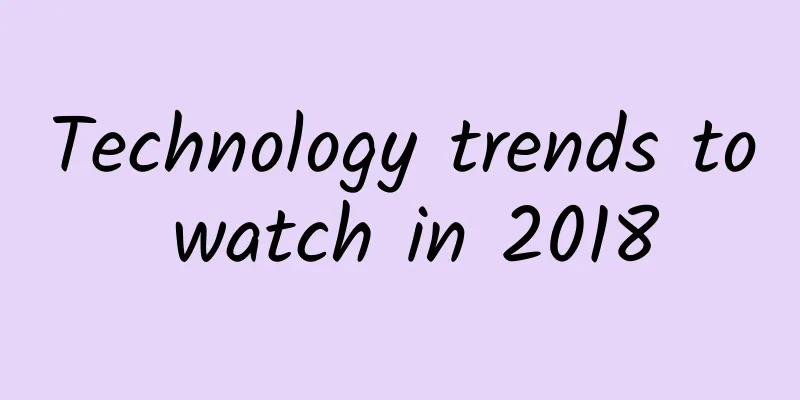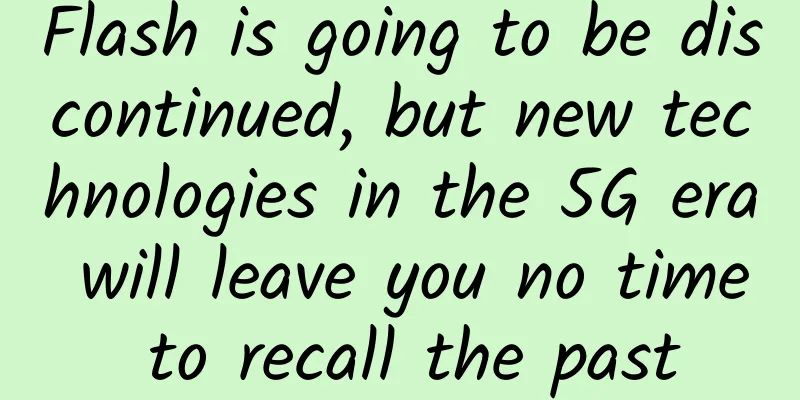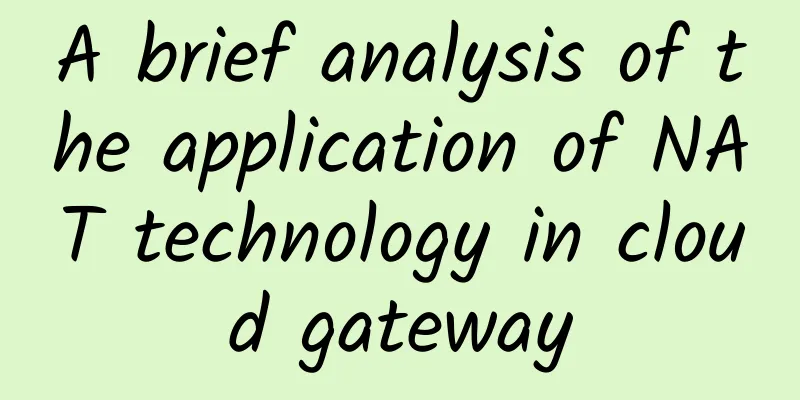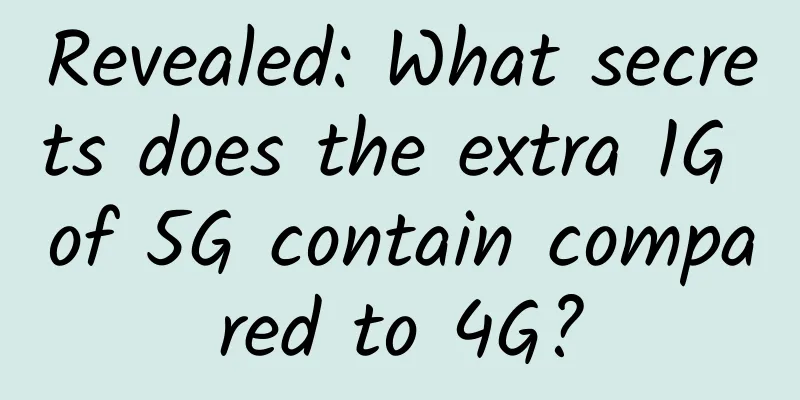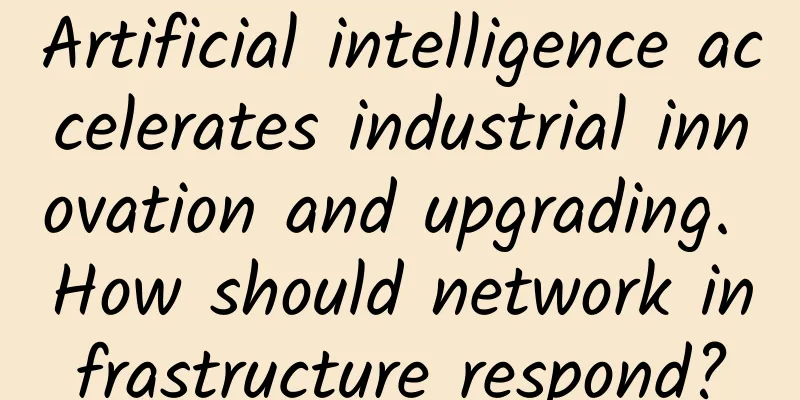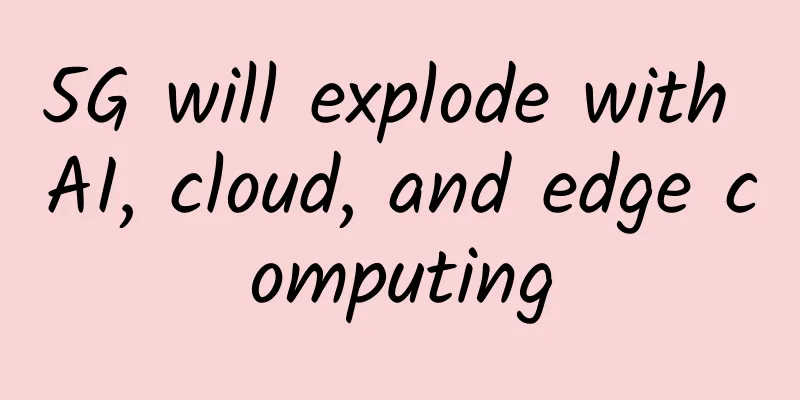What is the relationship between the Internet of Things and the Internet, when will the explosion occur and what are their uses?

|
Name Explanation The Internet of Things is an important part of the new generation of information technology and an important development stage in the "informatization" era. Its English name is: "Internet of things (IoT)". As the name suggests, the Internet of Things is an Internet that connects everything. This has two meanings: first, the core and foundation of the Internet of Things is still the Internet, and it is an extended and expanded network based on the Internet; second, its user end extends and expands to any object to exchange information and communicate, that is, everything communicates with each other. The Internet of Things is widely used in the integration of networks through intelligent perception, recognition technology, ubiquitous computing and other communication perception technologies. Therefore, it is called the third wave of the development of the world's information industry after computers and the Internet. The Internet of Things is the application extension of the Internet. Rather than saying that the Internet of Things is a network, it is better to say that the Internet of Things is a business and application. Therefore, application innovation is the core of the development of the Internet of Things, and Innovation 2.0 with user experience as the core is the soul of the development of the Internet of Things. definition The concept of the Internet of Things first appeared in Bill Gates' 1995 book "The Road Ahead". In "The Road Ahead", Bill Gates mentioned the concept of Internet of Things, but it was limited by the development of wireless networks, hardware and sensor equipment at that time and did not attract the attention of the world.
Four categories In fact, the concept of the Internet of Things comes from the analogy of the Internet. According to the relationship between the Internet of Things and the Internet, different experts and scholars have given their own definitions of the Internet of Things, which can be summarized into the following four types: 1. The Internet of Things is a sensor network, not connected to the Internet Some experts believe that the Internet of Things is a sensor network, which is just installing sensors on objects in people's living environment. These sensors can better help us understand the environment. This sensor network is not connected to the Internet. For example, the sensor network of Shanghai Pudong Airport is not connected to the Internet, but it is called the first Internet of Things. The relationship between the Internet of Things and the Internet is that they are two relatively independent networks. 2. The Internet of Things is part of the Internet The Internet of Things is not a brand new network. In fact, it has already existed. It is a natural extension and expansion of the Internet and a part of it. The Internet is an all-inclusive network, and more objects will be added to it. In other words, the Internet of Things is included in the Internet. 3. The Internet of Things is a complementary network to the Internet The Internet we usually refer to is a global network formed by computers between people, which serves the information exchange between people. The main body of the Internet of Things is a variety of objects, which transmit information between objects to achieve the ultimate purpose of serving people. The main body of the two networks is different. Therefore, the Internet of Things is an extension and supplement of the Internet. The Internet of Things and the Internet are two relatively equal networks. If the Internet is compared to the artery of human information exchange, then the Internet of Things is the capillary. The two are interconnected and are a beneficial supplement to the Internet. 4. The Internet of Things is the Internet of the future From a macroscopic perspective, the future Internet of Things will put people in an omnipresent network. Without realizing it, people can exchange information with people or things around them anytime and anywhere. At this time, the Internet of Things is equivalent to the ubiquitous network, or the Internet of the future. The Internet of Things, the ubiquitous network, and the Internet of the future, although their names are different, they all express the same vision, that is, humans can use any network, contact anyone or anything at any time, anywhere, to achieve the freedom of information exchange. The definitions of the four concepts all have their merits and shortcomings. From a narrow perspective, as long as objects are connected through a sensor network, whether or not they are connected to the Internet, they should be considered as part of the Internet of Things. From a broad perspective, the Internet of Things is not only limited to information transmission between objects, but will also be seamlessly integrated with existing telecommunications networks, ultimately forming an omnipresent information exchange between people and objects, and forming a ubiquitous network. In fact, the relationship between the Internet of Things and the Internet is that they are two relatively independent networks, but they have certain commonalities in data transmission technology. In telephone network and Internet applications, we hope that all people, computers, etc. are interconnected. However, the Internet of Things is different. A Taihu Lake water quality monitoring system and a Sinopec logistics system can have nothing to do with each other. This is why IBM emphasized its vertical industry applications when it proposed the concept of smart earth. Therefore, the Internet of Things is a general term for unconnected dedicated networks based on controllable and manageable technologies for objects. At present, it is accustomed to being called "ubiquitous network" internationally, which is actually to distinguish it from the Internet. The development of the Internet of Things in China The rapid rise of the Internet of Things in China is due to our country's several major advantages in the field of Internet of Things. ***, my country started the research on the core sensor network technology of the Internet of Things as early as 1999, and its R&D level is at the forefront of the world; Second, in the field of sensor networks worldwide, my country is one of the countries with leading standards and has a high number of patents; Third, my country is one of the countries that can realize the complete industrial chain of the Internet of Things; Fourth, my country's wireless communication network and broadband coverage are high, providing solid infrastructure support for the development of the Internet of Things; Fifth, my country has become the world's second largest economy and has relatively strong economic strength to support the development of the Internet of Things. Application The Internet of Things has a wide range of uses, covering smart transportation, environmental protection, government work, public safety, safe homes, smart fire protection, industrial monitoring, environmental monitoring, street lighting control, landscape lighting control, building lighting control, square lighting control, elderly care, personal health, flower cultivation, water system monitoring, food traceability, enemy reconnaissance and intelligence gathering and many other fields. |
<<: How to Evaluate DCIM Tools for the Modern Data Center
>>: Teach you how to choose the most suitable wireless AP
Recommend
Wi-Fi 5 is being phased out, while Wi-Fi 6 is experiencing an explosion: its share is growing
[[388418]] Today, IDC released the "China WL...
Alibaba Cloud Golden Autumn Cloud Season, Cloud Server Flash Sale 2C2G5M Annual Payment Starting from 60 Yuan
Alibaba Cloud (aliyun) launched another Golden Au...
Andrew Ehlers: Promoting with an ecological approach from a data perspective
[[327407]] Director of Global Technology and Solu...
Four challenges in securing multi-cloud networks
Today's organizations are not only actively m...
[6.18]DogYun: Top up 100 yuan and get 10 yuan, 30% off for Dynamic Cloud, 20% off for Classic Cloud, 100 yuan off for Dedicated Server per month, up to 50% off for Lucky Wheel
DogYun is a Chinese hosting company established i...
80VPS: Hong Kong server monthly payment starts from 420 yuan, US CN2 monthly payment starts from 650 yuan, Hong Kong/US cluster server starts from 750 yuan
I have shared information about 80VPS many times ...
80VPS: US 8C cluster server monthly payment starts from 800 yuan, Hong Kong 8C cluster server monthly payment starts from 1000 yuan
Recently, some readers asked about cluster server...
Byte One: Is there any difference between HTTP long connection and TCP long connection?
Hello everyone, I am Xiaolin. A reader sent me a ...
How to Improve the Security of Wireless Routers
As we all know, the security of wireless routers ...
The champion of Huawei Elite Competition is about to be announced. Who will win the highest title of Huawei ICT Talent?
In a few days, the finals of the two exciting eve...
80VPS: VPS hosting starts at 199 yuan per year, with options for Los Angeles/Hong Kong CN2/Japan CN2/Korea BGP, etc.
We have shared the information of the cluster ser...
VMISS VPS 20% off, Hong Kong/Korea/Japan/Los Angeles etc. starting from 21 yuan/month, CN2 GIA/9929/CMIN2 lines available
Canadian hosting provider VMISS currently offers ...
Zhang Ping, academician of the Chinese Academy of Engineering: 6G faces dimensional disaster
5G is developing in full swing. Currently, the nu...
Huawei Cloud Online Education Innovation Season is launched, 365 innovation upgrade package fully empowers education upgrade in the 5G era
[51CTO.com original article] Recently, Internet e...
QuickPacket: $69/month - E5-2683v4 CPU, 64G memory, 1TB or 500G SSD, 50TB monthly traffic, Los Angeles data center
I searched and found that the last information ab...


